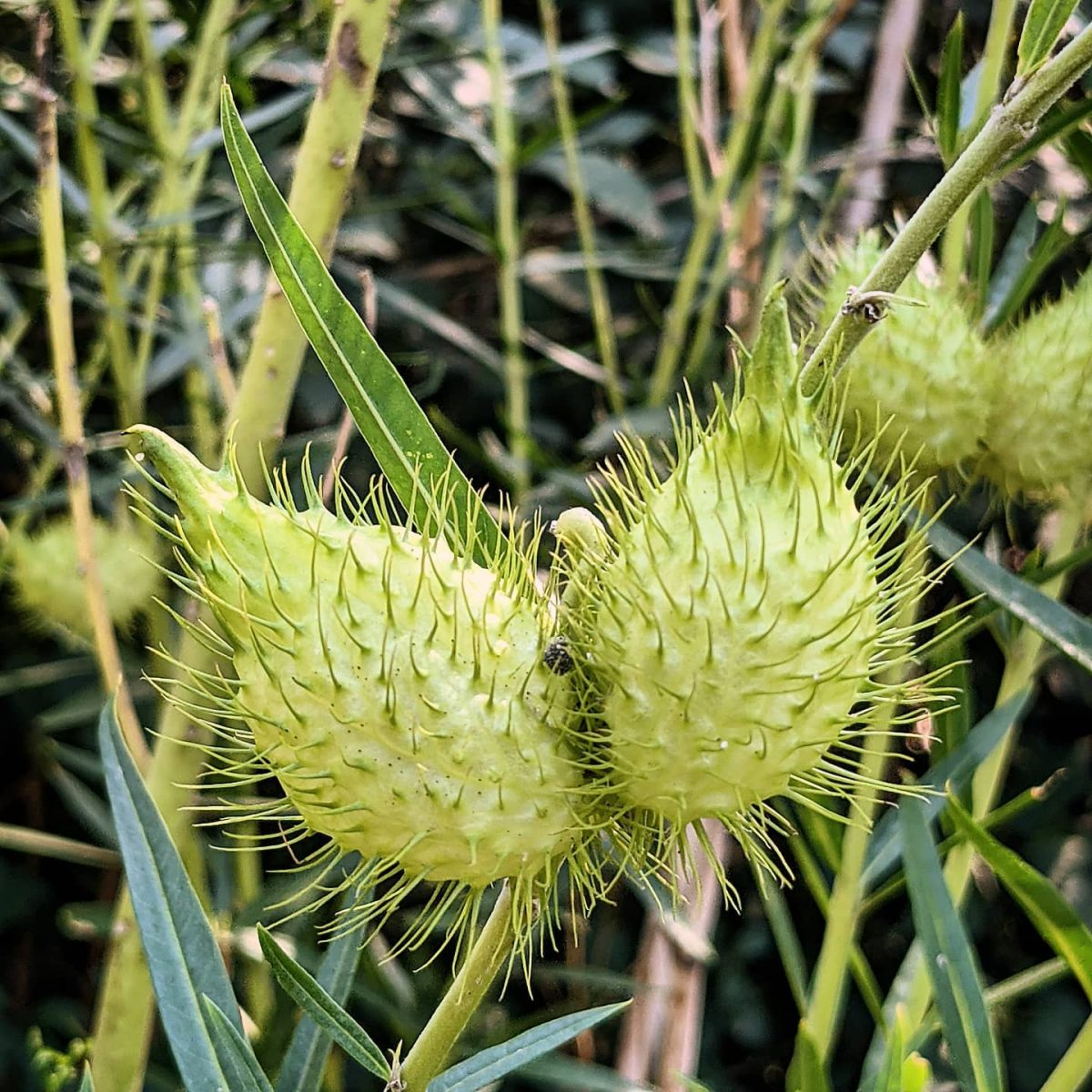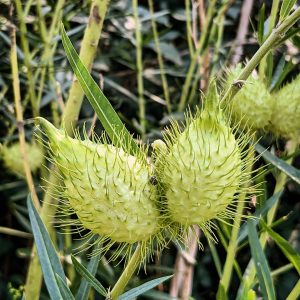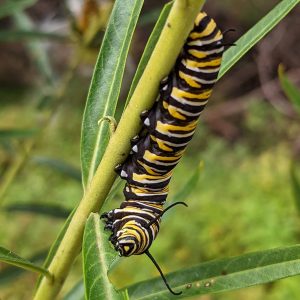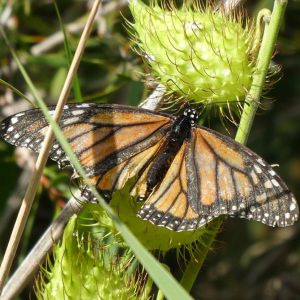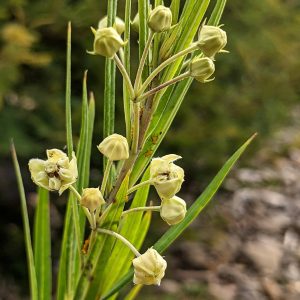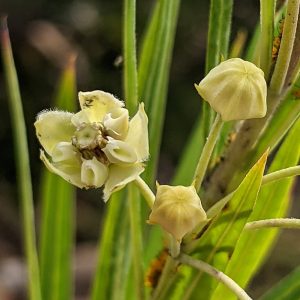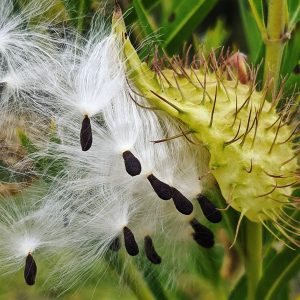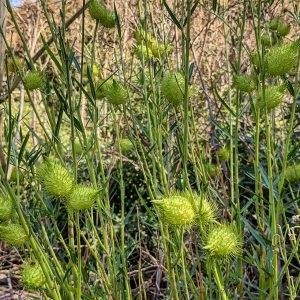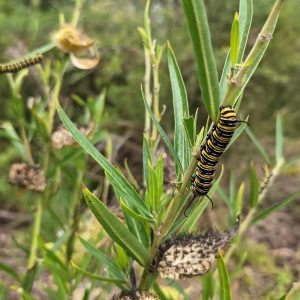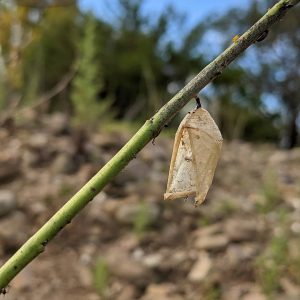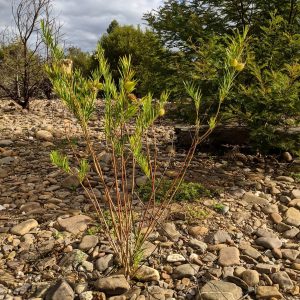Narrow-leaved Cotton Bush (Gomphocarpus fruticosus), a South African milkweed and accidental host for the Monarch (Wanderer) butterfly.
Known here as Swan Plant (floated in water, the seed pods resemble waterbirds) or Balloon Plant (with other Gomphocarpus species), this shrub was introduced to Australia at an early date.
Grown as an ornamental, a cut flower, and a poor source of bedding (unrelated to true cotton), the species escaped almost immediately with pollination success and parachuted seeds. Such a common weed at Sydney that it was known as ‘Sydney Cotton Tree’, John Dunmore Lang reported that it had been introduced on the Hawkesbury River in 1802 and reached Bathurst NSW by 1826. The plant also escaped cultivation in SA by the 1880s.
This is one of several cultivated and escaped milkweeds which have assisted establishment of the Monarch butterfly (Danaus plexippus) in Australia since the 1850s. Arriving periodically as wind-blown individuals via the Pacific islands, the North American Monarchs feed on native nectar sources but their caterpillars are reliant on exotic milkweeds like this one.
In Victoria, the species was first collected in the Wimmera (1896), presumably originating in windblown seed; 1890s newspapers record plants sent for IDs from across the state’s north, including the Ovens River and Bendigo. The first collection within the metropolitan was only made at Sunshine in 1992 by NHV botanist Val Stajsic. Yet Monarch butterflies have been collected in Geelong and Melbourne since at least the 1940s, and it would be reasonable to consider that unrecorded populations of this milkweed had likely established in the vicinity by that date. Recent records place the plant in Brighton and Rosanna, and at the Sugarloaf Reservoir.
The photographed plants are established on alluvial banks and beaches of Werribee River tributaries at Bacchus Marsh and Melton. Although this population on Melbourne’s north-west fringe is previously unrecorded, Monarchs have been recorded in the area since at least 2012.
View Original Post on Instagram
Search for information about Gomphocarpus fruticosus in the Flora of Victoria
View information and occurrences of Gomphocarpus fruticosus on the Atlas of Living Australia
